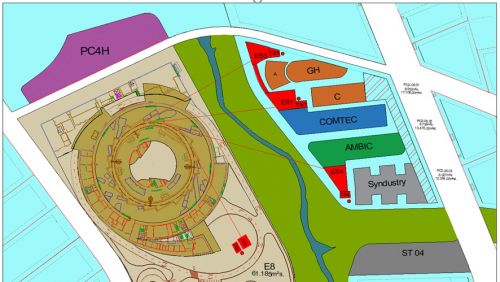
08/04/2021
ASTIP, the future hub for advanced research in the Barcelona Synchrotron Park
ASTIP, the future hub for advanced research in the Barcelona Synchrotron Park
ASTIP, an acronym for Alba Science, Technology and Innovation Park, is a vast project to create a large advanced research centre in the Barcelona Synchrotron Park, close to ALBA synchrotron.
More specifically, it will be an interdisciplinary hub for complex materials and biological systems that blends a unique combination of characterization and imaging tools, big data, material growth and device fabrication facilities. It will establish an ecosystem where scientific research, technology development and industrial innovation are merged to create a resilient, resource-efficient and competitive economy, focused on green energy, the digital transition and health.
ASTIP brings together the capabilities of ALBA synchrotron with the existing research, innovation and business ecosystem: Eurecat, the Technology Centre of Catalonia; IBMB, the Molecular Biology Institute of Barcelona (CSIC); ICMAB, the Institute of Materials Science of Barcelona (CSIC); ICN2, the Catalan Institute of Nanoscience and Nanotechnology (CERCA); IFAE, the Institute for High Energy Physics (CERCA); UAB, the Universitat Autònoma de Barcelona; and the Barcelona Synchrotron Park. All of them members of the project.
The ASTIP project is one of the proposals of the Government of Catalonia to apply for the funds of the European Recovery Plan and it includes: the ALBA II program, that will transform ALBA synchrotron into a 4th generation synchrotron, and three new structures: the Complex Materials and Technologies Center (COMTEC), the Advanced Multiscale Bio Imaging Center (AMBIC) and an innovation hub (SYNDUSTRY) that will help to strengthen the relationship between basic research and companies.
More specifically, it will be an interdisciplinary hub for complex materials and biological systems that blends a unique combination of characterization and imaging tools, big data, material growth and device fabrication facilities. It will establish an ecosystem where scientific research, technology development and industrial innovation are merged to create a resilient, resource-efficient and competitive economy, focused on green energy, the digital transition and health.
ASTIP brings together the capabilities of ALBA synchrotron with the existing research, innovation and business ecosystem: Eurecat, the Technology Centre of Catalonia; IBMB, the Molecular Biology Institute of Barcelona (CSIC); ICMAB, the Institute of Materials Science of Barcelona (CSIC); ICN2, the Catalan Institute of Nanoscience and Nanotechnology (CERCA); IFAE, the Institute for High Energy Physics (CERCA); UAB, the Universitat Autònoma de Barcelona; and the Barcelona Synchrotron Park. All of them members of the project.
The ASTIP project is one of the proposals of the Government of Catalonia to apply for the funds of the European Recovery Plan and it includes: the ALBA II program, that will transform ALBA synchrotron into a 4th generation synchrotron, and three new structures: the Complex Materials and Technologies Center (COMTEC), the Advanced Multiscale Bio Imaging Center (AMBIC) and an innovation hub (SYNDUSTRY) that will help to strengthen the relationship between basic research and companies.
More news
03/08/2016
Pier 01, the new Barcelona technology hub
28/07/2016
Zero 2 Infinity sends satellites into space
22/07/2016
Latest SENER News From Space and the Sun
16/07/2016
Les Dames de Cerdanyola
08/07/2016
The ALBA Synchrotron reveals the inside of hepatitis C-infected cells
30/06/2016
The Bioinformatics Barcelona Initiative









